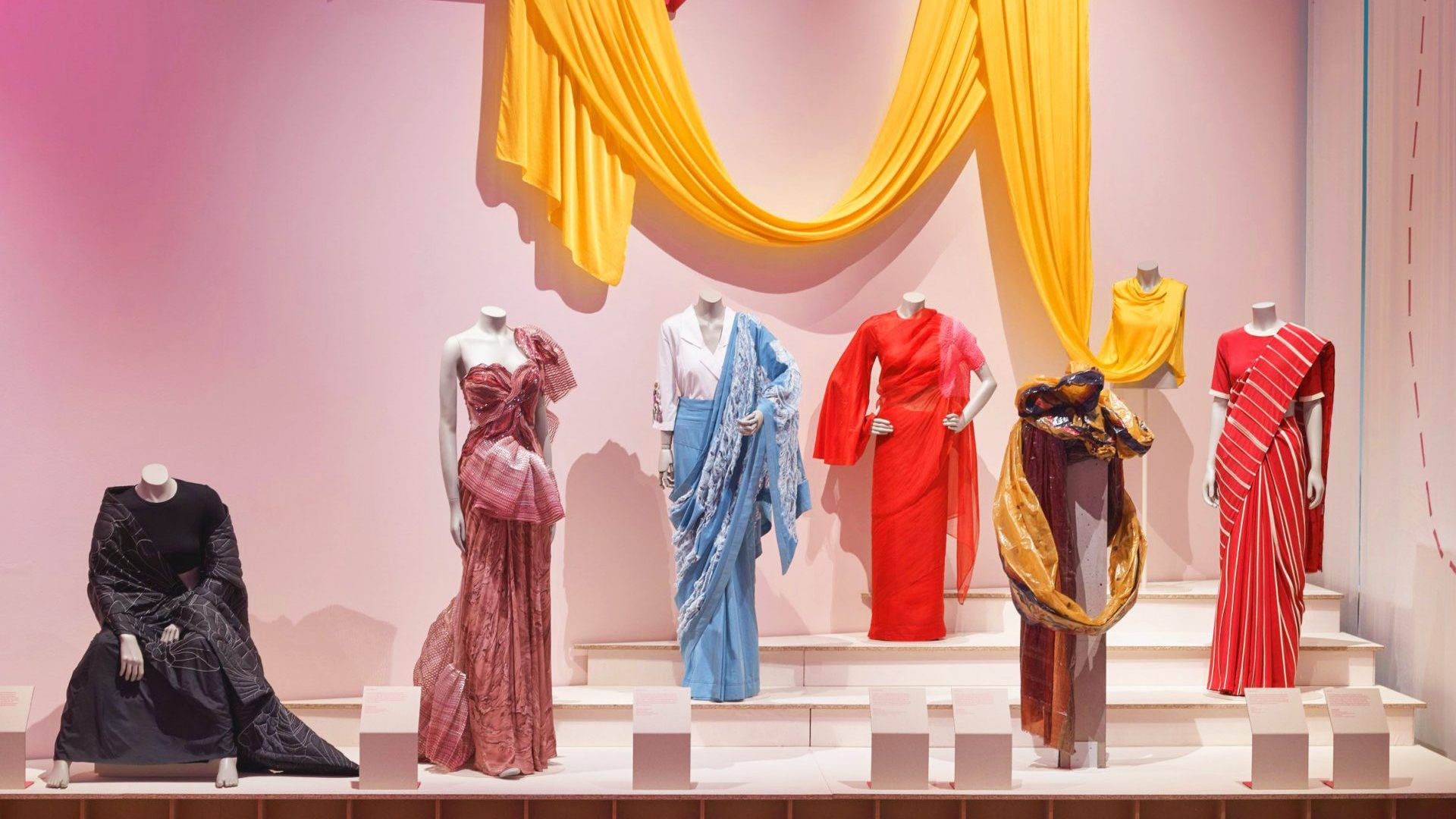On a sweltering afternoon, I headed to the Midlands Art Centre in Cannon Hill Park – an art and design museum I used to visit for indoor play as a child. I wasn’t merely there out of nostalgia, but to see its newest exhibition, The Offbeat Sari. Curator Priya Khanchandani’s focus, she told us as she led a small group around, was on the revival of the garment, which she said fell out of fashion in the 1960s.
I grew up seeing saris in many different contexts – at public Diwali celebrations, at weddings where red saris are worn for luck, and I remember a neighbour from my childhood, an auntie (though like many of my aunties, no relation), who always wore them in shades of blue and pink.
The saris in the exhibition’s first section are even more eye-catching. On mannequins are saris made from distressed denim, layered in sequins, and even woven from golden-coloured steel to resemble silk. Designers are experimenting with hybrids – sari gowns, dresses, and pre-draped saris – that are easier to wear and more convenient, yet no less stylish. I mentioned to the girl next to me that some of the looks reminded me of Met Gala outfits, and we both agreed we had our eyes on a tie-dyed sari that could be worn with trainers.
Around the corner, a short film titled Sari Men plays on a small screen, showing the people who make and sell the garments. It leads into a section titled Identity and Resistance, which explores the question: who can wear a sari? We’re shown a gallery of people across gender identities and how the meaning of the garment connects different aspects of identity.
From its use in beautiful expressions of queerness and gender, to the blending of cultures in the form of a kilted sari, it’s fascinating to see how this single garment can be endlessly reinvented – and how it helps younger generations reconnect with their ancestors.
Suggested Reading

The Lionesses are the England I believe in
My eyes are immediately drawn to a bright fuchsia sari, styled with a pink bamboo stick in the mannequin’s hand. It is not a celebration, as I had presumed. This sari is worn in protest by the Gulabi Gang, a social justice group that fights violence against women in northern India.
My mind draws parallels to how, throughout history, women in various freedom movements have worn traditional garments as acts of resistance against colonial and patriarchal violence.
Priya leads me into the third section, where rolls of fabric are displayed like those one might see in a sari shop. Chillingly, there is a sari dyed with ink distilled from Delhi’s filthy air – a city among the most polluted in the world. I know air pollution is a widespread issue across the global south, but seeing it literally imprinted onto a simple, timeless garment is profoundly moving.
I ask Priya what she hopes people will take away from this exhibition. Is it joy at the sari’s reinvention and comeback? Anger or sorrow at the messages from activists? Her answer surprises me.
“I think we see South Asian culture – and global south cultures more broadly – as stuck in the past, when actually, they are constantly evolving in so many interesting ways, because they have such young populations,” she explains. “India has a huge young population. There is so much excitement, so much entrepreneurship, and a willingness to experiment. That’s what I’d want people to take away from this exhibition – the willingness to experiment.”
It’s a sentiment I appreciate, and one that the exhibition powerfully conveys. The Offbeat Sari packs so much emotion and excitement into a small museum in Birmingham.
The Offbeat Sari is at the Midlands Art Centre, Birmingham from June 28-November 5
Michaela Makusha writes about culture, politics, and racial and gender politics



